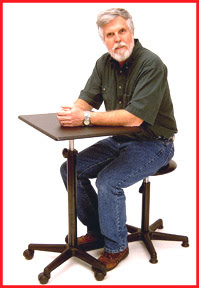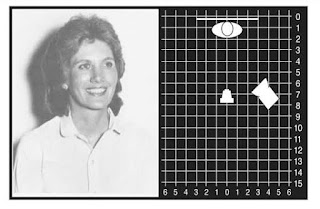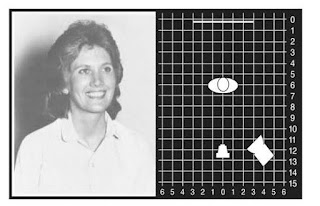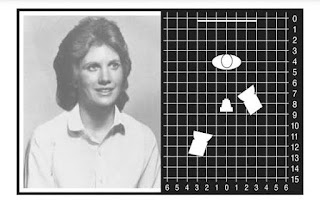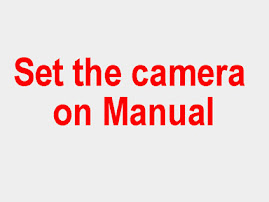
It probably is a good idea to make sure you are familiar with the lighting set ups shown in the Smith Victor diagrams in blog #4. I normally use the standard 2 light portrait type of light set up. Unless I cheat.
I shoot most of my product pictures just as if I was going to shoot a portrait. I use a main light and a fill light. The main light defines the item and the fill light, fills in the shadows. I shoot my pictures in my office. I have a work bench and a fold up table that
I use to hold the products. I have gotten a little fancier over the years by adding a pull down set of gray roll paper backgrounds. One is slightly less than 9 feet wide. I cut down a 9 foot roll background using a hand saw. That way when I unwind the roll and extend it out it will just fit between the bookcases. This lets me shoot larger items or people.
I also have a 53 inch wide roll of the same gray background paper mounted on the wall. That is the one I normally use to shoot standard or small product pictures. The workbench also doubles as my packing table where I pack up and ship each day's orders.
If I am shooting small object like the small table top light that comes with some of the shooting tents, I can also just tape a piece of gray background paper to the wall behind it. Letting it drape down over the table enough to put the product on. Then I light it using one umbrella light as the main light. This is the major light for the product. It is located to the right of the camera and slightly above the camera.
Then, usually I cheat. Instead of using a second umbrella light on the left side of the camera and level with the camera, I bounce the second light off of the white ceiling. I am lucky enough to have a white ceiling. The white ceiling is basically a very large umbrella. It diffuses the light enough that it not only fills in the shadows on the product but, it also puts light on the background behind the product.

The Finished Picture
I would get basically the same picture if I had used an actual umbrella for the second fill in light instead of cheating and bouncing the light off of the ceiling.
I set my exposures manually. Usually the lights are 250 watt bulbs. Tungsten white balance. The exposures run around 1/2 second at f8 depending on how far the lights have to be from the item to get even coverage. If I were shooting people, I would probably use 500 or 600 watt lights. That would give me a faster shutter speed and less chance of the picture being blurred because of subject movement.
If I shot a lot of portraits, I would probably invest in a set of electronic flashes. I would still shoot them manually of course. That is the only way to consistantly get good exposures and colors.
Check out these books on product lighting from Amazon
Our web page has all sorts of photo accessories.


